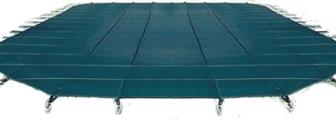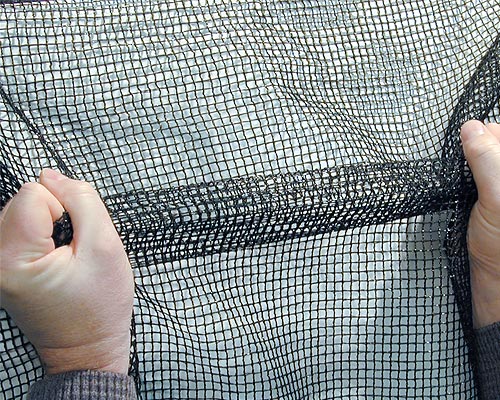Pool covers are a great investment for your pool… and your wallet.
Pool covers are mostly used during the winter season, and rightfully so; below is a safety cover that is recommend in the winter months it is one of the most durable covers. However, pool covers can be a useful everyday pool accessory that can benefit both you and your pool.
Pool covers keep your pool clean, thus reducing operating costs. Quality pool covers can act as a protective seal over the water- keeping the heat and moisture in. They also keep organic debris such as dirt, leaves, and bugs out.
Using a pool cover can save you up to 50% on heating costs. This means you can afford to extend your pool season. What’s better than that? Did you know evaporation is the major source of heat loss for swimming pools? Evaporation of pool water occurs mostly during the night. The ambient air temperature drops below the temperature of the water in the pool. By eliminating this temperature barrier, you won’t loose any water due to evaporation. This saves water costs over time.
Al Curtis from Ask the Pool Guy explains about pool covers and their ability to reduce energy costs. “A pool cover is basically a barrier between the colder outdoor air and the warmer pool water. No matter the outdoor temperature, your pool can lose water each night due to evaporation. This process is called convection- the process of hot and cold attracting each other.”
According to Al, bubble style solar pool covers may be the most cost-effective. “Even if you have an indoor pool and think you have no need for a pool cover, that’s simply not true. There are specially designed indoor pool covers that keep condensation in the pool rather than letting it seep into the walls and roof of the pool room. It can help prevent structural damage.”
If you use a pool cover every night, it will reduce evaporation by up to 97% daily. That almost completely eliminates the threat of water evaporation. It can also warm the pool water up a couple of degrees- extending your swimming season without having to run your heater longer. Below is a leaf cover.
There are many styles of pool covers to pick from. Some include: thermal blankets, leaf covers, slat covers, or the bubble blanket. Most have a long life expectancy.
If you’re not interested in using a pool cover all year round, consider investing in a roll-away version. It literally rolls away into a cavity at one end of the pool. So when it’s not in use, you can simply store is away out of sight.
Main Benefits of a Pool Cover:
- Reducing or eliminating evaporation: Pool covers almost eliminate night-time water evaporation due to temperature differences. An average pool can lose up to 26 gallons of water every day due to evaporation. Pool covers can significantly reduce this loss.
- Minimizing heat loss: Heat loss is mainly caused by evaporation. The majority of a pool’s heat loss is from the surface of the pool The best way to minimize evaporation (creating heat loss) is to cover your pool at night and during the day when it’s not being used.
- Improving water cleanliness: Debris from the natural world can affect your pools pH levels, causing you to do more work and maintenance. Adding a pool cover can eliminate 80%-90% of debris from entering your pool in the first place. This will also reduced the work of your filter and cleaning system.
- Added benefits: Pool covers reduce the total cost of pool chemicals, reduce the amount of pool chlorine lost due to UV rays, can extend your swimming season, and increase your pool temperature without the use of your heater.
